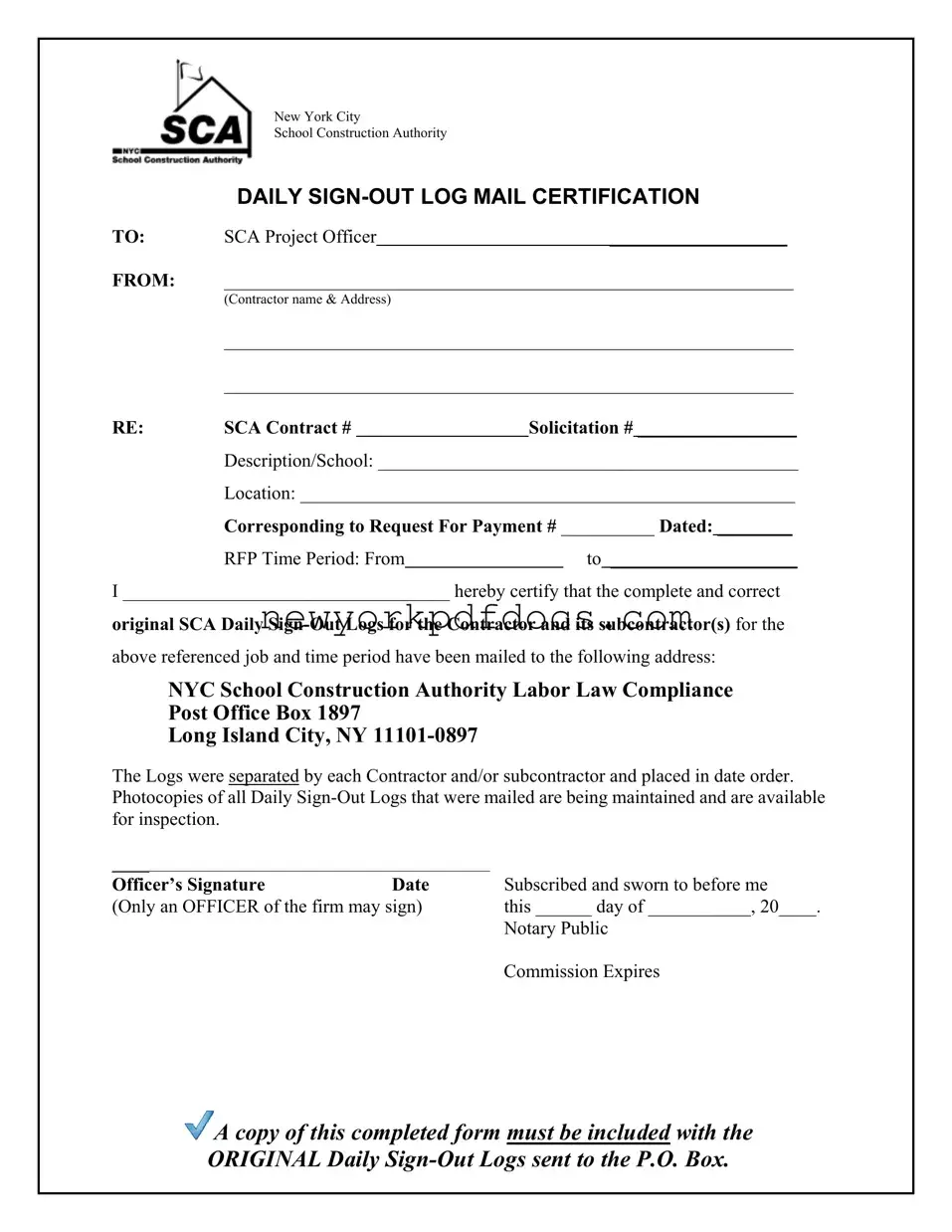Filling out the NYC School Construction Authority (NYCSCA) Daily Sign-Out Log is a crucial task for contractors. However, several common mistakes can lead to complications. Understanding these pitfalls can help ensure that the form is completed accurately.
One frequent error is failing to provide the contractor name and address clearly. This information is essential for identifying the contractor responsible for the project. If this section is incomplete or illegible, it can result in delays or confusion regarding the submission.
Another mistake involves neglecting to fill in the SCA Contract # and Solicitation #. These numbers are vital for tracking and processing the logs. Omitting them can lead to the logs being misfiled or lost in the system.
People often forget to specify the description and location of the project. This information helps the NYCSCA understand the context of the submission. Without it, the logs may not be properly associated with the correct project, leading to potential issues with compliance.
Additionally, the RFP time period must be accurately indicated. Errors in this section can create discrepancies in payment requests and project timelines. It is important to ensure that the dates are correct and match the work performed.
Some individuals mistakenly believe that they can submit the logs without separating them by contractor and subcontractor. Each log should be organized in this manner and placed in date order. Failure to do so can complicate the review process.
Another common oversight is not maintaining photocopies of all Daily Sign-Out Logs sent. Keeping these records is essential for accountability and may be required for future inspections. Without them, a contractor may struggle to provide proof of compliance.
People sometimes forget to include the officer’s signature and date on the form. Only an officer of the firm can sign, and missing this step can render the submission invalid. It is crucial to ensure that the signature is present before mailing the logs.
In some cases, individuals neglect to have the form notarized. This step is necessary for verifying the authenticity of the submission. Skipping this process can lead to questions about the validity of the logs.
Lastly, failing to include a copy of the completed form with the original logs sent to the P.O. Box is a common mistake. This copy serves as a reference and is essential for the NYCSCA's records. Without it, the submission may be incomplete.
By being aware of these common mistakes, contractors can ensure that their submissions to the NYCSCA are accurate and complete, thus facilitating a smoother process.



 A copy of this completed form
A copy of this completed form